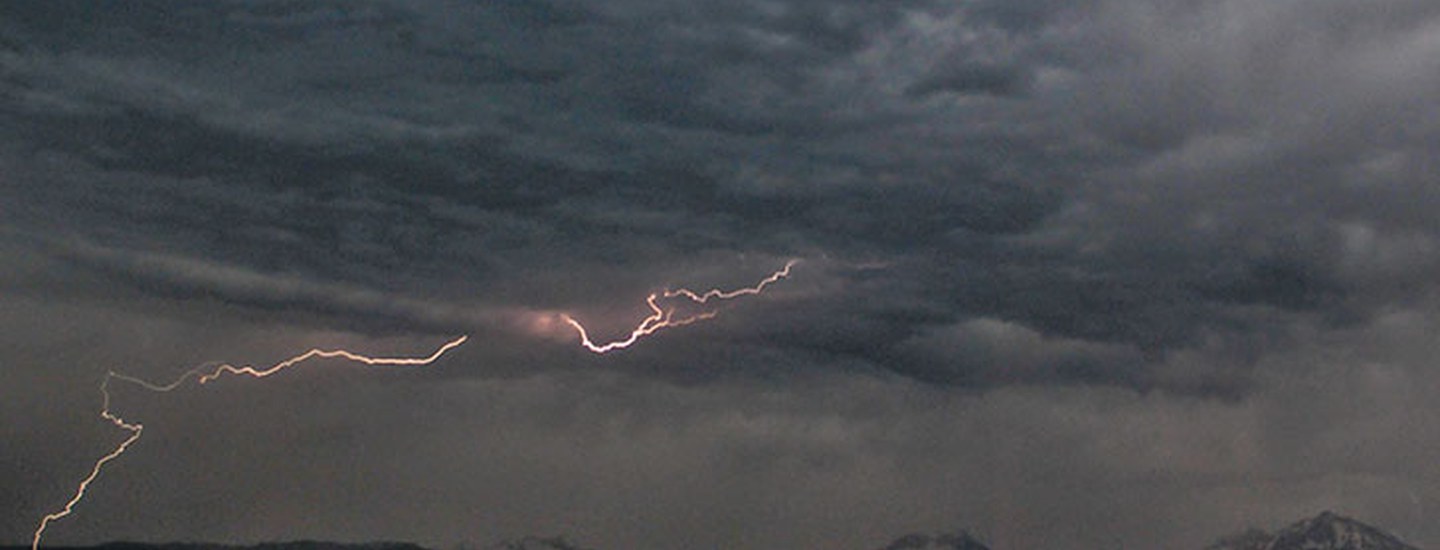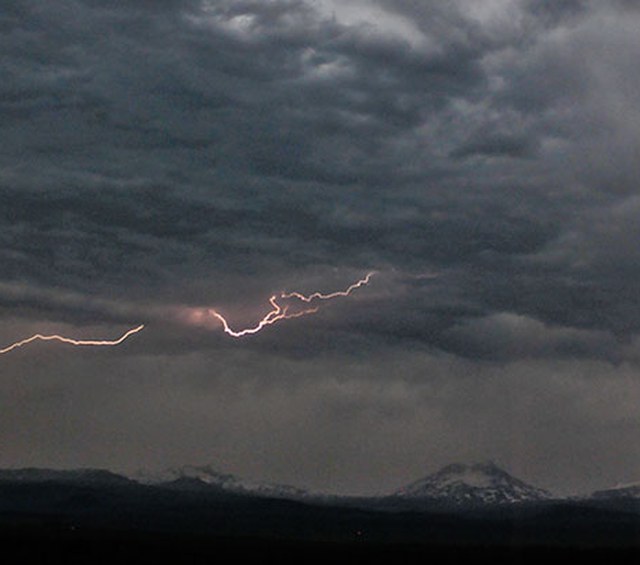Summer is our favorite time for hiking and backpacking, but the summer heat often brings thunderstorms. You probably already know to go to lower ground when caught hiking in a storm, but what else can you do to stay safe? Whether you love watching a good storm roll in or are terrified by the sight of a flash, this guide will help you use good judgment when lightning strikes in the backcountry.
Lightning forms in cumulonimbus clouds when the positively and negatively charged ends of the cloud build up enough energy that a bolt of electricity is released. Lightning can occur between clouds (often called sheet lightning) or between a cloud and the ground.
Unfortunately, nowhere outside is completely safe from lightning. Lightning tends to strike higher areas but it is not always the case. Lightning can strike up to 25 miles from the thunderhead. So, if you can hear thunder, you are likely in striking distance. If possible, go inside a building or in a car with the windows rolled up. If you are in the backcountry, follow the guidelines below.
How to stay safe(ish) in a lightning storm:
- Summer lightning storms usually develop in the afternoon, so plan for morning hikes that get you out of the mountains by the time the thunderheads roll in.
- Move to lower ground. Avoid peaks, ridges, and open meadows.
- If you are on or in water, get to shore immediately.
- Do not seek shelter under isolated trees. Uniform forests are a better place to be not because lightning won’t strike in a forest, but because there are so many trees that the probability you will be next to the strike is lowered.
- Do not seek shelter in caves or overhangs. Lightning can make an arc over the cave entrance, so you will not be protected.
- If you are in a group, keep 50 feet between each person to avoid the current traveling between people.
- Don’t lie down. Minimize your contact with the ground by assuming a tight crouched position with your feet close together.
- Wait at least 30 minutes after the last clap of thunder before leaving shelter.
Fun facts about lightning:
- Lightning is hotter than the surface of the sun!
- Lightning doesn’t always come from a thunderhead. Volcanoes and even forest fires can trigger lightning bolts! Charged particles moving through ash in the air can create enough static to discharge as a lightning bolt!
- It takes 5 seconds for the sound of thunder to travel one mile.
- Metal does not attract lightning, but it does conduct electricity.
Learn More
- Learn more about weather with Your Guide to Clouds
Sources
- NOAA, Lightning Safety Tips and Resources
- Backpacker Magazine, Busted: 4 Lightning Myths


